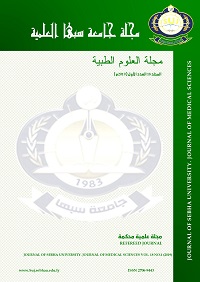In Vitro: Influence of Zirconium Coatings on Surface Roughness of (Beta-Titanium III and Timolium Titanium) Orthodontic Archwires
Main Article Content
Abstract
The main purpose of this study was to investigate the significance of Zr Coatings and its appropriate thickness on surface roughness of the beta-titanium orthodontic archwires (β-Ti III) and timolium titanium archwires (TIM), Layers of Zr were deposited on the orthodontic archwires and compared the surface roughness before and after Zr deposition. The surface roughness was examined before and after Zr deposition, using scanning electron microscopy (SEM) and atomic force microscopy (AFM). Two commercially available orthodontic archwires were used in this research, namely, β-Ti III and TIM orthodontic archwires. The archwires were cut to 25 mm length specimens. In this study, the electron beam physical vapor deposition (EB PVD) technique was implemented to coat four various thicknesses ( 5, 10, 25, and 50 nm) of pure Zr on selected archwires and the results thereof were investigated using AFM, SEM. SEM and AFM analysis tests of Zr-coated archwires showed significant improvement in their surface roughness compared with uncoated archwires. (TIM) Zr-coated archwires showed lower surface roughness than (β-Ti III) Zr-coated archwires. The improvement of coatings Zr with 50 nm thick was more reliable than that of coatings Zr with 5, 10, and 25 nm. It is concluded that the most available commercial product for orthodontic archwires could be improved by the surface deposition of Zr. coating 50 nm thick of Zr on β-Ti III and TIM orthodontic archwires is recommended for even sliding mechanics due to the resulting reduced surface roughness.
Downloads
Article Details
In a brief statement, the rights relate to the publication and distribution of research published in the journal of the Sebha University, where authors who have published their articles in the Sebha University journal can use or distribute their articles. They reserve all their rights to the published works, such as (but not limited to) the following rights:
- Copyright and other property rights related to the article, such as patent rights.
- Research published in the journal of the University of Sebha and used in its future works, including lectures and books, the right to reproduce articles for their own purposes, and the right to self-archive their articles.
- The right to enter a separate article, or for a non-exclusive distribution of their article with an acknowledgment of its initial publication in the journal of Sebha University.
- Privacy Statement The names and e-mail addresses entered on the Sebha University Journal site will be used for the aforementioned purposes only and for which they were used.




